
How to Use Adafruit HT16K33 Breakout 16x8 LED Matrix Driver: Examples, Pinouts, and Specs
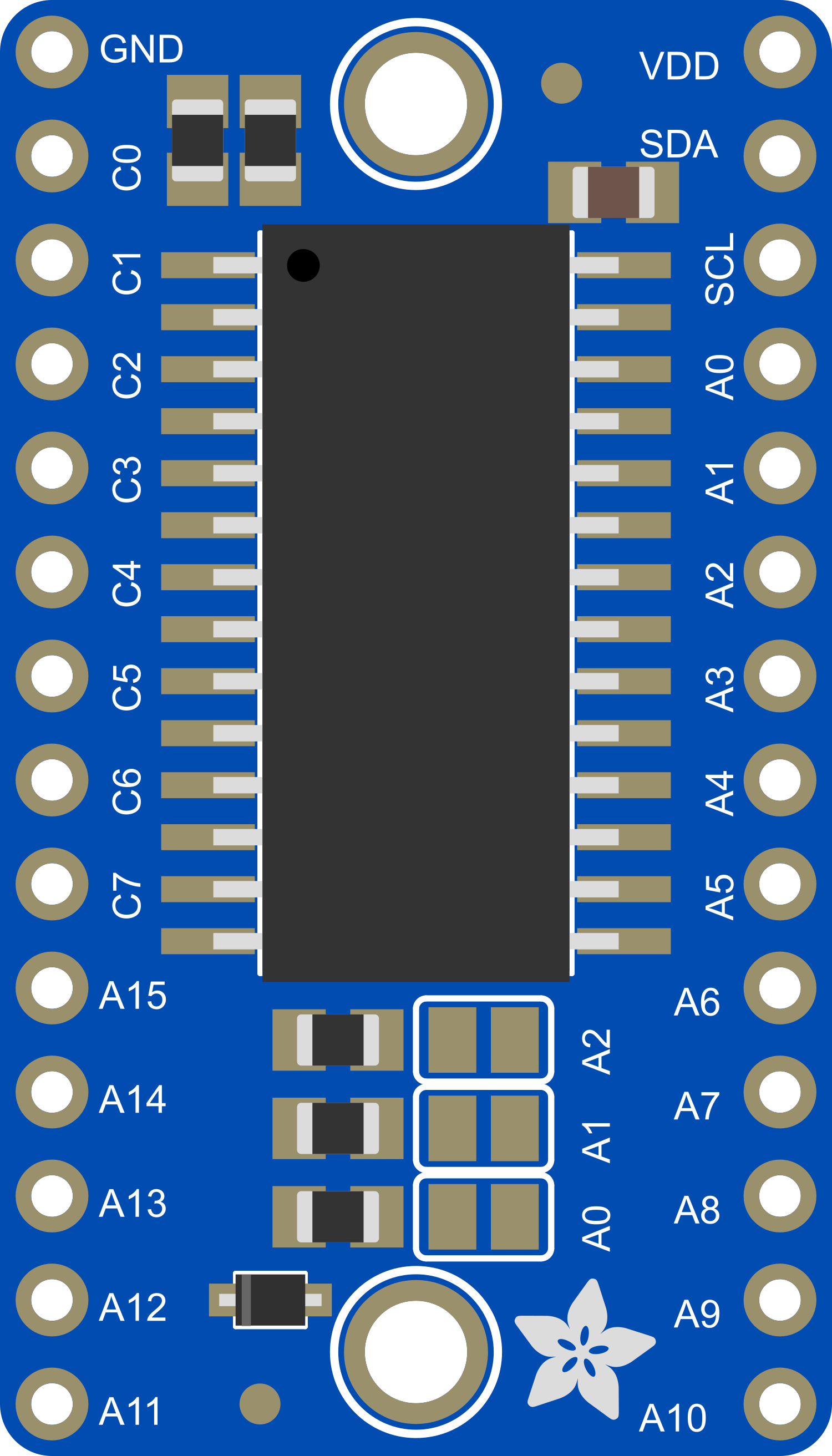
 Design with Adafruit HT16K33 Breakout 16x8 LED Matrix Driver in Cirkit Designer
Design with Adafruit HT16K33 Breakout 16x8 LED Matrix Driver in Cirkit DesignerIntroduction
The Adafruit HT16K33 Breakout is a versatile LED matrix driver module designed to control a 16x8 matrix, totaling 128 LEDs. It utilizes the HT16K33 chip to manage individual LED states, offering an I2C interface for communication with microcontrollers such as Arduino, Raspberry Pi, and others. This breakout is ideal for creating digital signage, gaming displays, or any project requiring a bright, customizable LED array.
Explore Projects Built with Adafruit HT16K33 Breakout 16x8 LED Matrix Driver
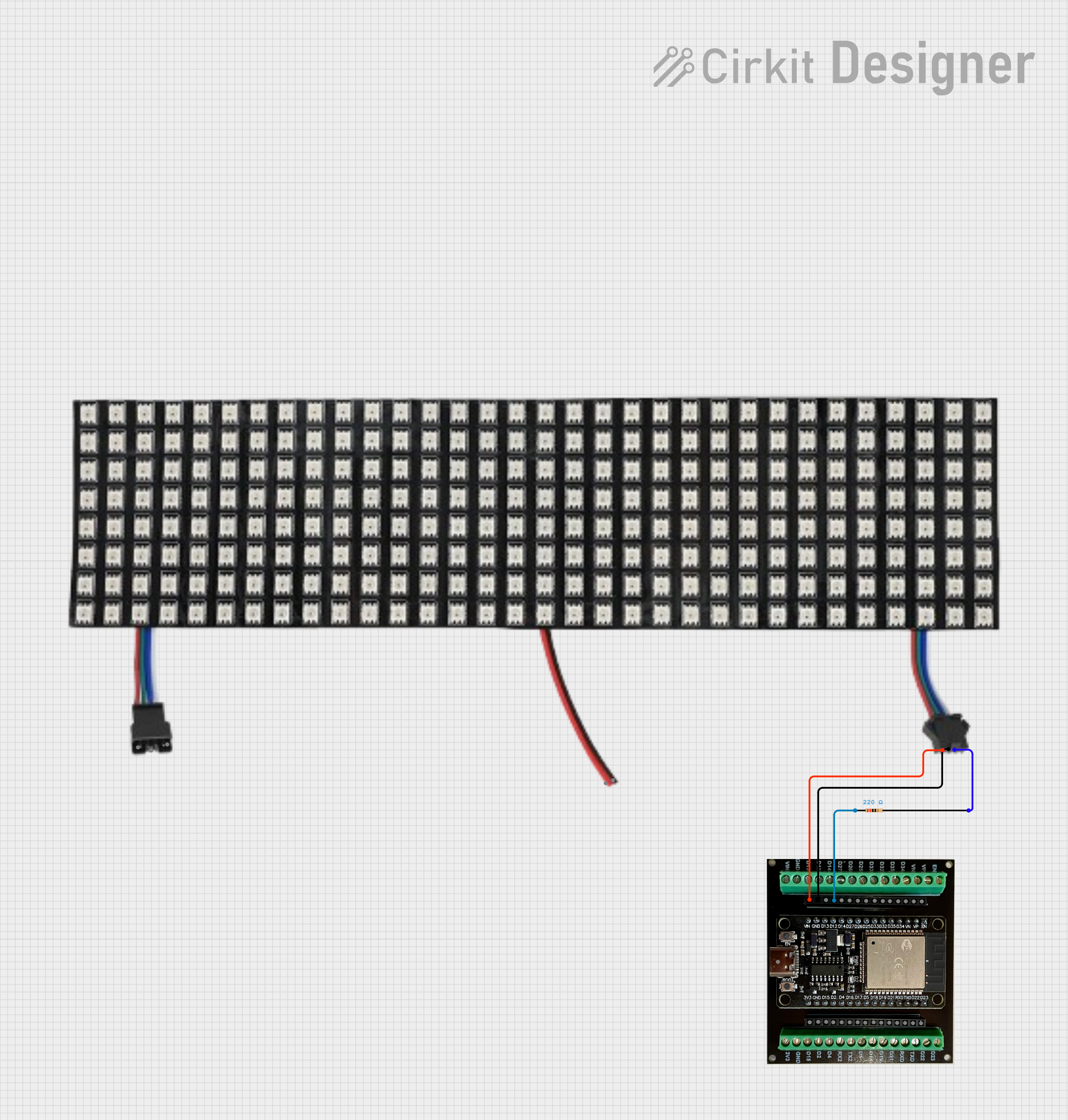
 Open Project in Cirkit Designer
Open Project in Cirkit Designer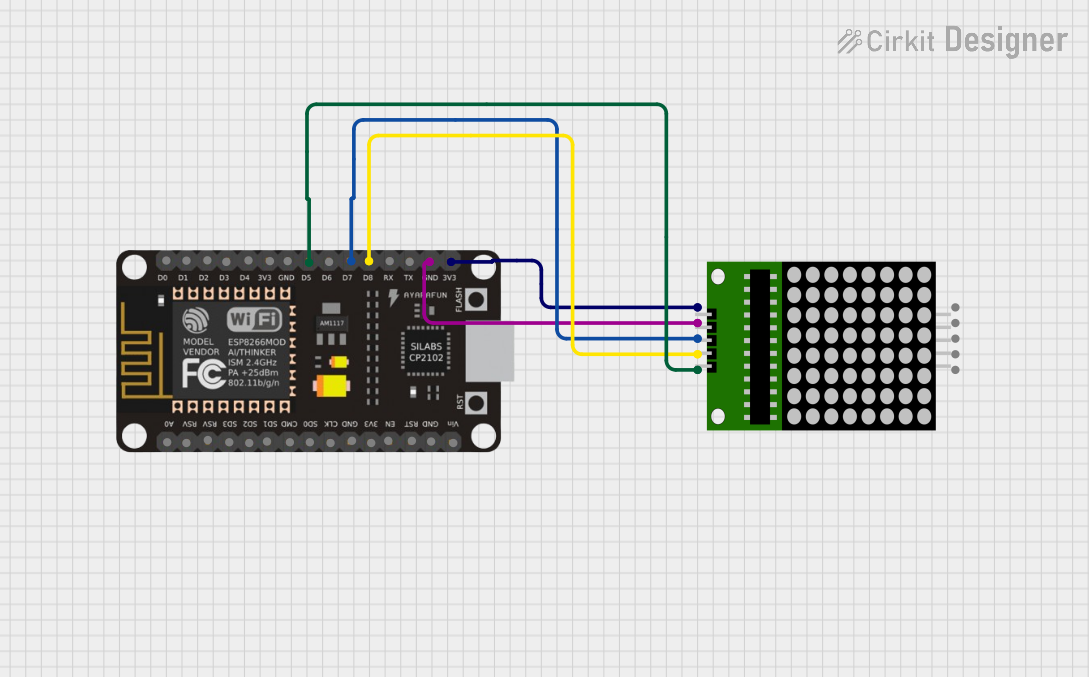
 Open Project in Cirkit Designer
Open Project in Cirkit Designer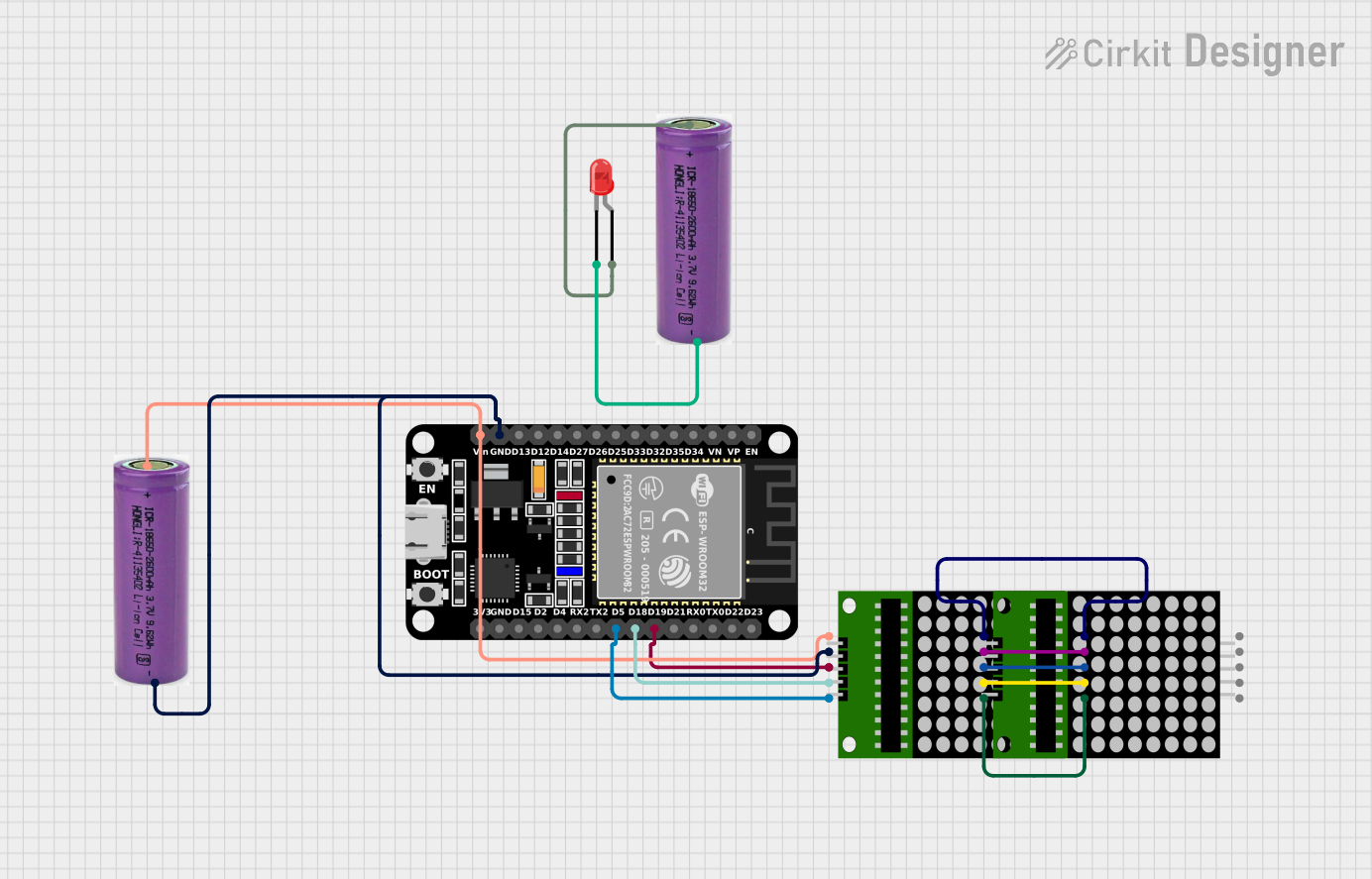
 Open Project in Cirkit Designer
Open Project in Cirkit Designer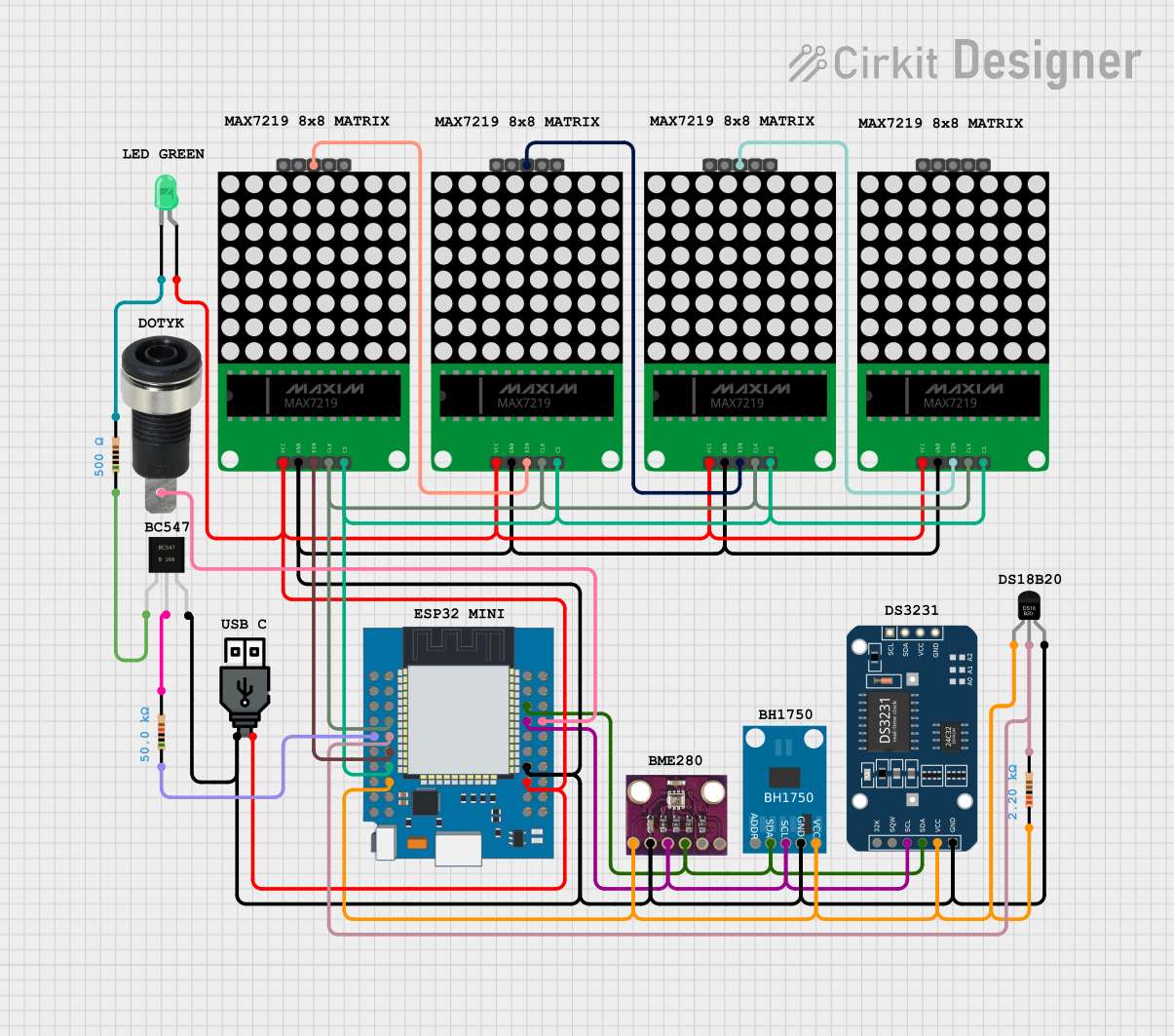
 Open Project in Cirkit Designer
Open Project in Cirkit DesignerExplore Projects Built with Adafruit HT16K33 Breakout 16x8 LED Matrix Driver

 Open Project in Cirkit Designer
Open Project in Cirkit Designer
 Open Project in Cirkit Designer
Open Project in Cirkit Designer
 Open Project in Cirkit Designer
Open Project in Cirkit Designer
 Open Project in Cirkit Designer
Open Project in Cirkit DesignerCommon Applications and Use Cases
- Digital clocks and timers
- Scrolling text displays
- Simple graphics and animations
- Gaming displays and scoreboards
- Interactive art installations
Technical Specifications
Key Technical Details
- Supply Voltage (Vcc): 4.5V to 5.5V
- Logic Level Voltage: 3.3V (5V tolerant)
- Max Current (per LED): 20mA
- Max Current (total): 400mA (when all LEDs are on)
- Communication Interface: I2C
- I2C Address Range: 0x70 to 0x77 (selectable with solder jumpers)
- Operating Temperature: -40°C to +85°C
Pin Configuration and Descriptions
| Pin Number | Name | Description |
|---|---|---|
| 1 | GND | Ground connection |
| 2 | VCC | Power supply (4.5V to 5.5V) |
| 3 | SDA | I2C data line |
| 4 | SCL | I2C clock line |
| 5-12 | ADDR | Address selection pins (A0-A6) |
Usage Instructions
Integrating with a Circuit
- Power Connections: Connect the VCC pin to a 4.5V to 5.5V power supply and the GND pin to the ground.
- I2C Connections: Connect the SDA and SCL pins to the corresponding I2C data and clock lines on your microcontroller.
- Address Selection: Set the I2C address using the ADDR pins by soldering the appropriate jumpers.
Important Considerations and Best Practices
- Ensure that the power supply is within the specified voltage range to prevent damage.
- Use pull-up resistors on the I2C lines if they are not provided by the microcontroller.
- Avoid driving all LEDs at maximum brightness simultaneously to prevent exceeding the maximum current rating.
- To reduce power consumption and heat, manage brightness levels efficiently.
Example Code for Arduino UNO
#include <Wire.h>
#include "Adafruit_LEDBackpack.h"
Adafruit_8x16matrix matrix = Adafruit_8x16matrix();
void setup() {
matrix.begin(0x70); // Initialize the matrix with the I2C address
matrix.setBrightness(10); // Set brightness level (0 is dim, 15 is bright)
}
void loop() {
matrix.clear(); // Clear the matrix display
matrix.setCursor(0, 0); // Set cursor at top-left corner
matrix.print("Hello"); // Print "Hello" on the matrix
matrix.writeDisplay(); // Update the display with the new data
delay(2000); // Wait for 2 seconds
}
Ensure that the Adafruit LED Backpack library is installed in your Arduino IDE before uploading this code to your Arduino UNO.
Troubleshooting and FAQs
Common Issues
- LEDs Not Lighting Up: Check the power supply connections and ensure the I2C lines are properly connected.
- Dim Display: Increase the brightness using
setBrightness()or check the power supply voltage. - Incorrect Characters Displayed: Verify that the correct I2C address is used in the
begin()function.
Solutions and Tips for Troubleshooting
- Double-check wiring, especially the I2C connections.
- Use the
i2cdetecttool or similar to confirm the device's I2C address. - Ensure that there are no solder bridges on the ADDR pins that might cause an incorrect address setting.
- If using multiple HT16K33 devices on the same I2C bus, ensure each has a unique address.
FAQs
Q: Can I chain multiple HT16K33 breakouts together? A: Yes, you can connect multiple devices on the same I2C bus with different addresses.
Q: How do I change the I2C address of the breakout? A: Solder the appropriate combination of ADDR jumpers to set the desired address.
Q: What is the maximum number of LEDs that can be controlled with one HT16K33 breakout? A: The breakout can control up to 128 LEDs arranged in a 16x8 matrix.
Q: Can the HT16K33 breakout be used with a 3.3V system? A: Yes, the logic level is 3.3V tolerant, but ensure that VCC is within the specified range.
For further assistance, consult the Adafruit HT16K33 Breakout forums or contact technical support.